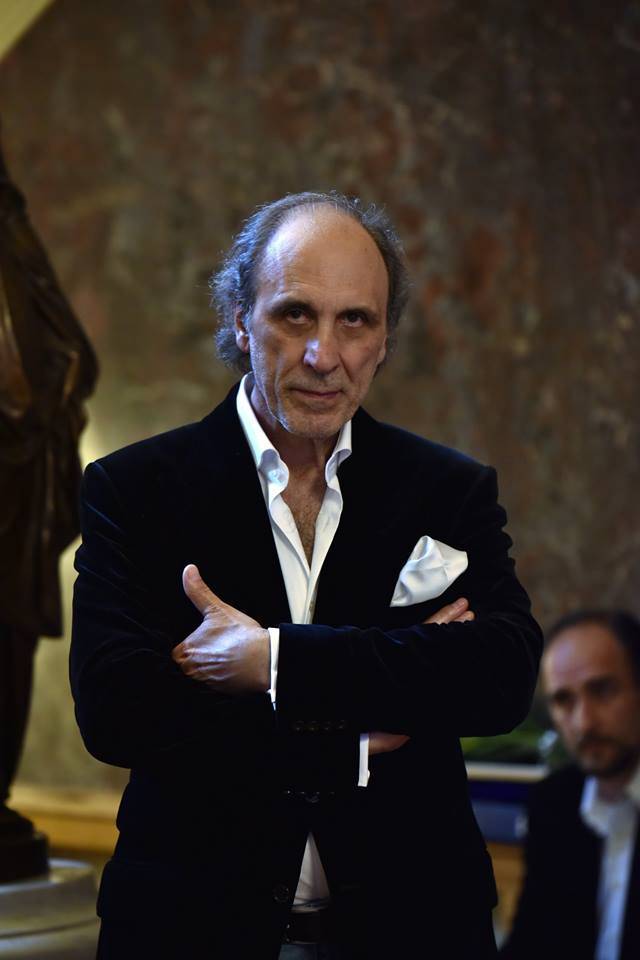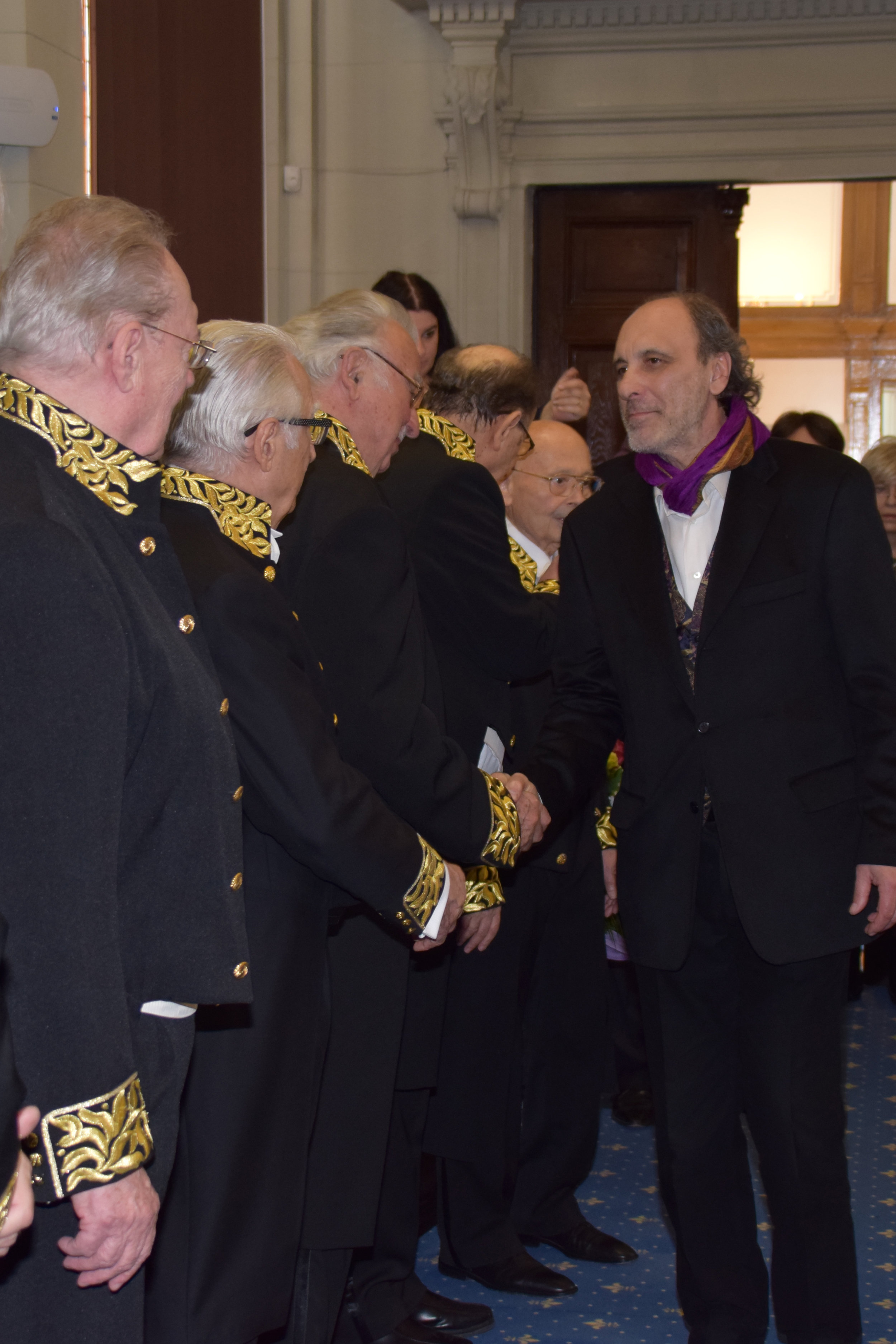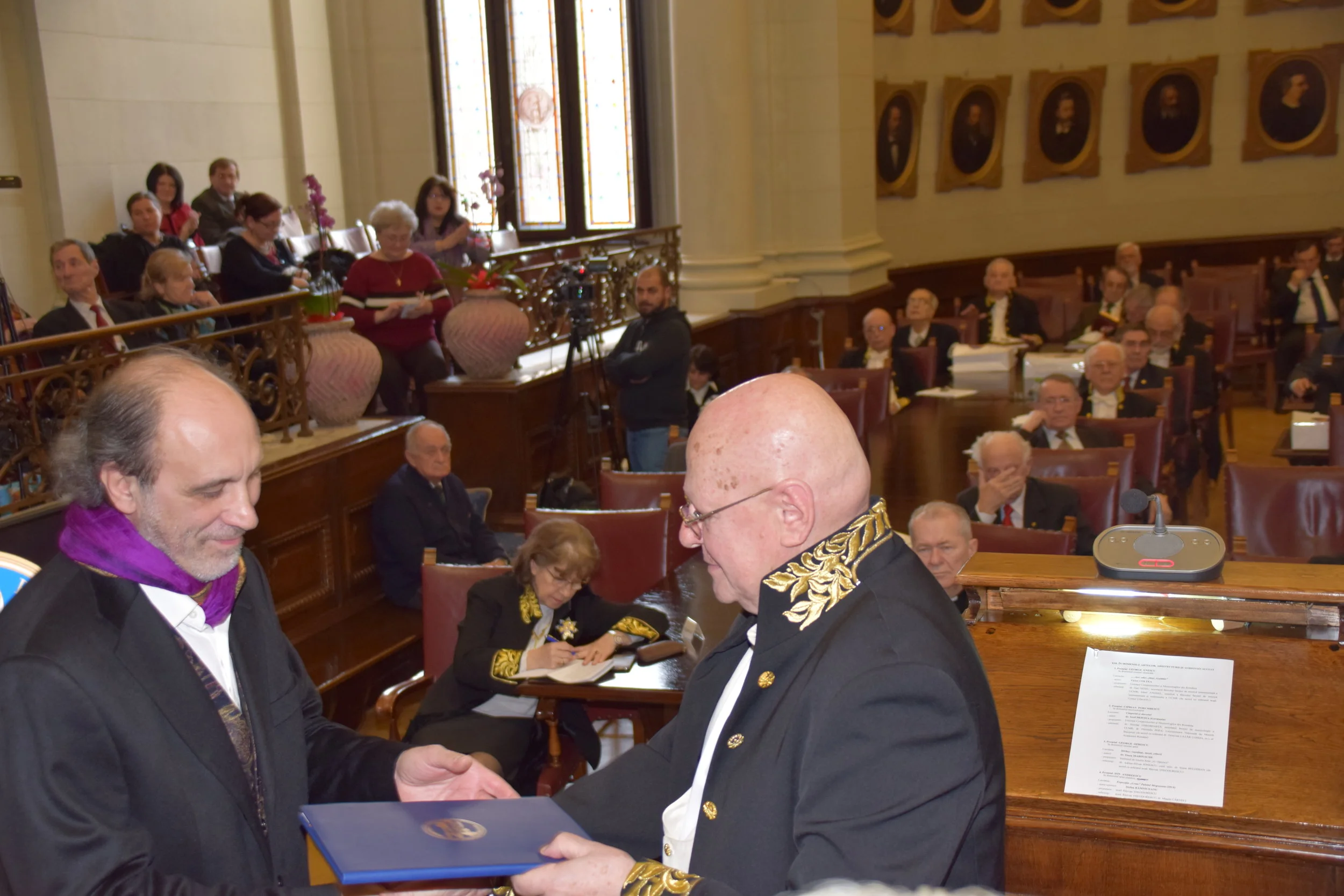Born in Ploiesti, Romania, in 1954, Stefan Ramniceanu lives and works between Paris and Bucharest. A graduate of the National University of Arts, Bucharest in 1979, Ramniceanu's artwork has captivated audiences since his first exhibitions as he is, quoting former Minister of Culture and Foreign Affairs of Romania Andrei Pleşu, "one of those artists who know how to seduce, surprise and irritate; in other words, he has the gift to be unpredictable."
Ramniceanu’s artistic career began in 1985 when he began showing his artwork in two well-known galleries of Bucharest, Atelier 35 and Galeria Orizont. At that time, his work caught the eye of prominent cultural figures: art critic and historian Radu Bogdan and writer and philosopher Nicolae Steinhardt both praised his work for re-envisioning light in painting, making it a "light from the inside", i.e. a light coming from the artistic shape itself that makes it lighter and raises it to a higher spirituality. The excitement that accompanied the artist's revelation to the public was reflected in a landmark essay entitled Stefan Ramniceanu, artistic path, in which art historian Răzvan Theodorescu expressed how Ramniceanu's oeuvre had been a revelation to him, inspiring him "the feeling of a new future for contemporary art" in Romania.
A couple of years later, in 1988, as his work was beginning to be exhibited abroad – notably in Bulgaria, Hungary and Austria where he represented Romania at the Expositia de Arta Plastica Romaneasca, Ramniceanu held his solo exhibition Ferecătura at the Curtea Veche Palace, the most ancient palace of Bucharest. Former Minister of Culture Răzvan Theodorescu served as a curator for this exhibition which was to become a landmark event in Bucharest's cultural life. Designed as a tribute to celebrate three centuries from the coming to power of Romania's leading historical figure Constantin Brâncoveanu as Prince of Wallachia, the exhibition re-envisioned the imagery of Byzantium, turning art as a form of coded dissent against the oppression of the Ceausescu regime of that time. Ferecătura attracted Ramniceanu much attention and the Romanian television devoted him a special reportage entitled "the sense of grandeur, the cult of the effort and the joy of the offensive in Stefan Ramniceanu's art work" named after the striking expression used by Andrei Pleşu and was widely received as an act of civic courage. Following this exhibition, Ramniceanu's artwork gained the interest of the diplomatic circles, which opened him doors to exhibitions outside the communist world: in 1989, Ferecătura was itinerated in Athens on the initiative of the City of Athens under the name Report to Byzantium.
After establishing himself as a fixture in Romanian contemporary painting, Ramniceanu decided to face up to the international artistic arena. Shortly after having taken part to the Romanian revolution in December 1989, Ramniceanu was invited by the French government to come to France and eventually established his studio in Paris in 1991. First a fellow of the French government, he became a resident of the Cité Internationale des Arts in 1992 and was awarded the French citizenship in 1999. "I paint neither with tubes of paint nor with paintbrushes, I paint with the memory of things" Ramniceanu declared recently about his work, which has been exhibited widely in Paris and extensively abroad since the early 90's, with exhibitions in galleries such as Bernanos, Sandoz-Cité Internationale des Arts, Louis, FH Art Forum, and Visio Dell'Arte in Paris, Jardin de Lumière in Belgium, HS Kunst in Germany, Uni-Terre in Geneva and participations to numerous contemporary art fairs and is now part of major public and private collections throughout the word. In 2001, General Honorary Curator of the Louvre Museum and former Director of the Delacroix Museum Arlette Sérullaz wrote the preface to Ramniceanu’s first monography under the title Between Est and West, an alchemist which has survived through ages.
“It is not so easy to enter Stefan Ramniceanu’s studio but it is worth the risk. Once in you will encounter an artist and his work both disturbing and deeply seducing.”
Ramniceanu derives inspiration from a variety of sources, including the detail and refinement of Romanian embroideries and the imagery of the Byzantine culture. The language of material plays an essential role in the work of Stefan Ramniceanu, most of whose pictures have a three dimensional structure. For the past forty years, his work has been developing in a process of accumulation, mingling and reworking of themes, motifs and symbols which recur and overlap repeatedly in diverse media. Highly symbolic connections emerge from metal, concrete, wire and other heterogeneous materials. Numerous pastose layers of muted colors lend the surface of his paintings a relief-like structure and thus an almost sculptural plasticity. The artist has borrowed indeed vocabulary from the specifics of painting crossing the disciplines of photography and sculpture, where he now focuses his work. Now recognized as part of his oeuvre in its own right, Ramniceanu’s sculpture is gradually becoming more and more monumental in scale as illustrated notably by the Builder, a 8m heigh sculpture realized in 2014.
For his grand comeback in Romania in 2014, the Brancovan Palaces Cultural Center, in collaboration with the General Council of Bucharest and the Artists Union of Romania, devoted Ramniceanu an unparalleled retrospective under the title "Marks," (Urme) with over 400 artworks – including 30 monumental sculptures – being displayed in parallel at the Mogoşoaia Palace and at ATELIERAMNICEANU. Following this landmark exhibition, Ramniceanu was distinguished in 2015 in Romania as Man of the Year in Visual Arts (Cotidianul), awarded the prestigious Constantin Brâncoveanu Award for visual arts (Alexandrion Group Foundation), made Citizen of Honor of his home town, Ploiești and received in 2016 the "Ion Andreescu" price of the Romanian Academy – the highest recognition in Romania in the field of visual arts. In 2016, the Romanian Ministry of Culture produced an experimental art documentary entitled "Muzeon – Stefan Ramniceanu" dedicated to the artist. This film was directed by Laurențiu Damian, head of the Romanian Filmmakers Union, based on a original script of Academician Razvan Theodorescu. In 2018, Ramniceanu was distinguished as one of the “100 Heroes of Romania” and received the lifetime achievements “Excellence Award” from the Artists' Union of Romania.






























365 de eroi ai României